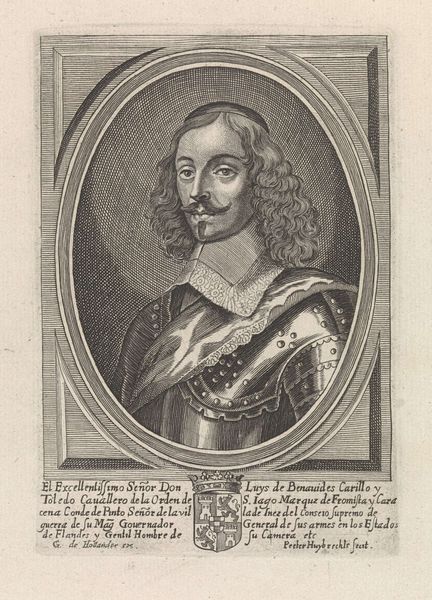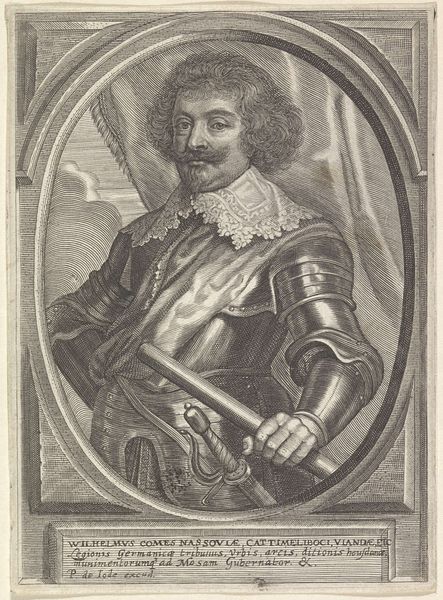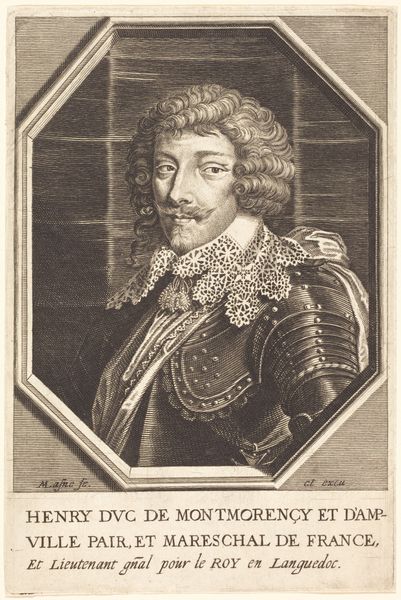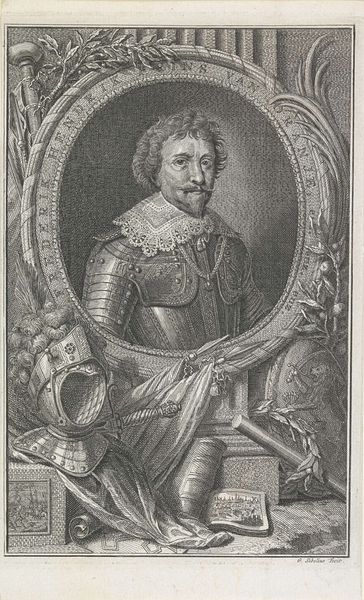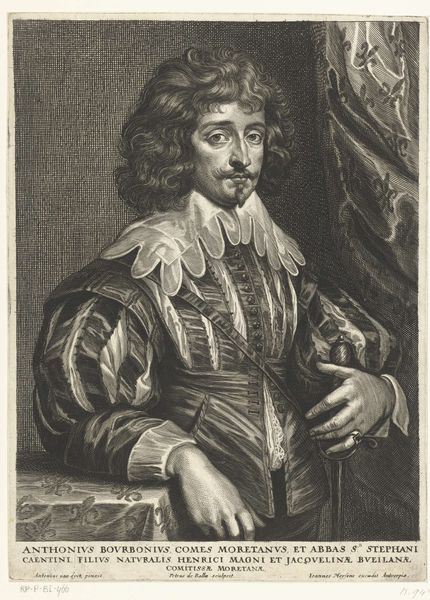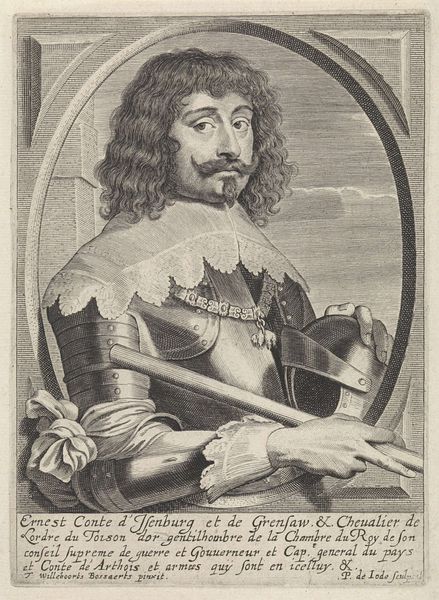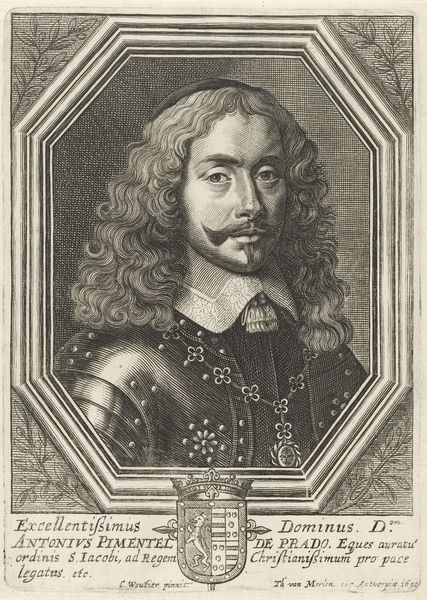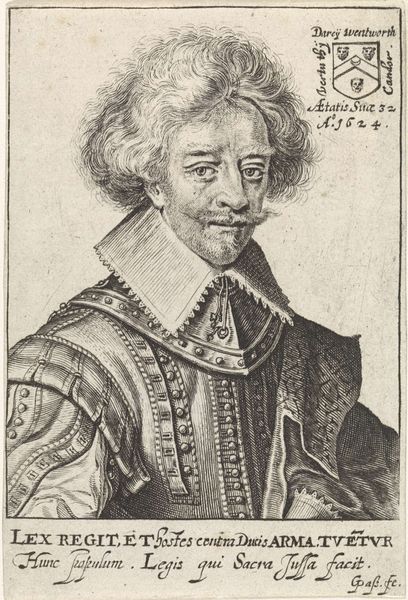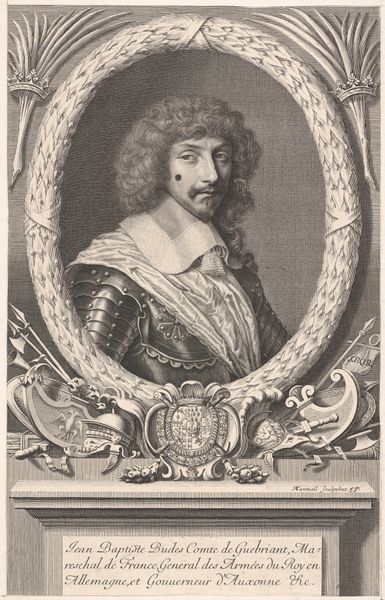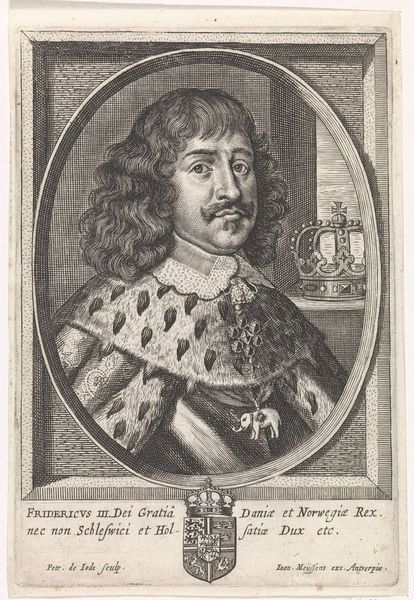
print, metal, engraving
#
portrait
#
baroque
# print
#
metal
#
old engraving style
#
caricature
#
history-painting
#
engraving
Dimensions: height 155 mm, width 114 mm
Copyright: Rijks Museum: Open Domain
Editor: So, here we have "Portret van Willem, graaf van Nassau-Siegen," a Baroque print dating somewhere between 1610 and 1668. It's currently held at the Rijksmuseum. Looking at the detail in the engraving, the armor, and the lace… It makes me think about the process behind it. How do you interpret this work, especially given its emphasis on such material details? Curator: Well, I see this engraving not just as a portrait, but as a testament to the labor and materials that defined the elite class of the time. Consider the paper it's printed on – its quality, its source, who had access to it? Engraving itself was a skilled craft, a means of mass production to disseminate images and ideologies. How does the seemingly endless replication impact the unique status ascribed to 'art'? Editor: That’s interesting, I hadn’t thought about it in terms of mass production. The finery of the Count, particularly the lace, stands out in stark contrast to, say, the background depicting a military scene. Does that difference highlight societal tensions, the cost of conflict perhaps? Curator: Precisely! The lace collar, the meticulously etched armor – these are signs of wealth accumulated through specific means, possibly including violent conflict as alluded to in the background. We should question the very definition of craft versus fine art. The labor in creating that lace, the metalwork of the armor... How do we decide what's deemed ‘art’ and who is granted that title 'artist' historically? Think of who would have made each of those elements depicted and their relative social status to the presumed engraver, B. Moncornet. Editor: That’s really fascinating. Thinking about the social and economic implications woven into the fabric of this seemingly simple portrait adds a whole new layer to my understanding of it. I'll never look at lace the same way again! Curator: Absolutely. Examining the materials and their origins offers a critical lens for deconstructing not only art history, but the history of power and labor itself.
Comments
No comments
Be the first to comment and join the conversation on the ultimate creative platform.
